Communications Questions of the Week
Free Speech in the Workplace: Navigating Rights & Respect
Last Updatedin Communications, Employee Relations, HR Compliance Question of the Week
Workplace Bullying
Last Updatedin Communications, Employee Relations, HR Compliance Question of the Week
Empathy First: A Modern Guide to Nonprofit Layoffs
Last Updatedin Communications, Employee Relations Question of the Week
How to Create an Effective HR Communication Plan: A Step-by-Step Guide
Last Updatedin Communications Question of the Week
Unleashing Employee Potential Through Competency-Based Job Descriptions
Last Updatedin Communications Question of the Week
How Can I Prevent Tension Between My Remote Team and On-Site Team?
Last Updatedin Communications Question of the Week
Why Do I Need An Employee Handbook?
Last Updatedin Communications Question of the Week
Why Do We Celebrate Labor Day?
Last Updatedin Communications Question of the Week
What Are Stay Interviews and What Questions Should I Ask?
Last Updatedin Communications Question of the Week
Designing a Modern Dress Code for Today’s Workplace
Last Updatedin Communications Question of the Week
How Can You Teach a Manager to be a Good Listener?
Last Updatedin Communications Question of the Week
Dealing With Workplace Gossip
Last Updatedin Communications Question of the Week
What is the Value of Job Descriptions?
Last Updatedin Communications, HR Compliance Question of the Week
HRIS Software – What Does “Determine Your Needs” Mean?
Last Updatedin Communications Question of the Week
Tips For How To Have Difficult Conversations With Employees
Last Updatedin Communications Question of the Week
Candidate Experience: How Small Tweaks Can Make a Huge Impact
Last Updatedin Communications, Recordkeeping Question of the Week
Happy and Positive Thinking Is a Choice
Last Updatedin Communications Question of the Week
What Should I Consider Before Doing a Reduction in Force?
Last Updatedin Communications, Employee Relations, HR Compliance Question of the Week
Why You Should Always Be Networking
Last Updatedin Communications Question of the Week
Should I be worrying about employee retention?
Last Updatedin Communications, Employee Relations, HR Strategy Question of the Week
English-Only Policies in the Workplace
Last Updatedin Communications Question of the Week
Writing a Winning Employee Newsletter
Last Updatedin Communications Question of the Week
Communication During the Holidays
Last Updatedin Communications Question of the Week
Gauging Employee Engagement
Last Updatedin Communications Question of the Week
Starting An Employee Newsletter
Last Updatedin Communications Question of the Week
Office Communication: Email Etiquette
Last Updatedin Communications Question of the Week
Improving the Flow of Communication
Last Updatedin Communications Question of the Week
Employee Newsletter – Planning
Last Updatedin Communications Question of the Week
Total Rewards Statements
Last Updatedin Communications Question of the Week
Contact Us
Clark Schaefer Strategic HR
10856 Reed Hartman Hwy
Suite 225
Cincinnati, OH 45242

Clark Schaefer Strategic HR is recognized by SHRM to offer Professional Development Credits (PDCs) for SHRM-CP® or SHRM-SCP® recertification activities.
The information provided on this website does not, and is not intended to, constitute legal advice; instead, all information, content, and materials available on this site are for general informational purposes only. Readers of this website should contact their attorney to obtain advice about their particular situation and relevant jurisdiction. This website contains links to other third-party websites. These links are only for the convenience of the reader, user or browser; Strategic HR does not recommend or endorse the contents of the third-party sites.



